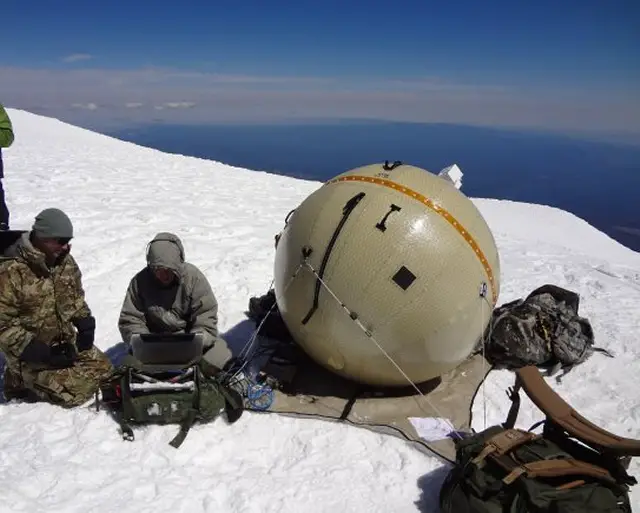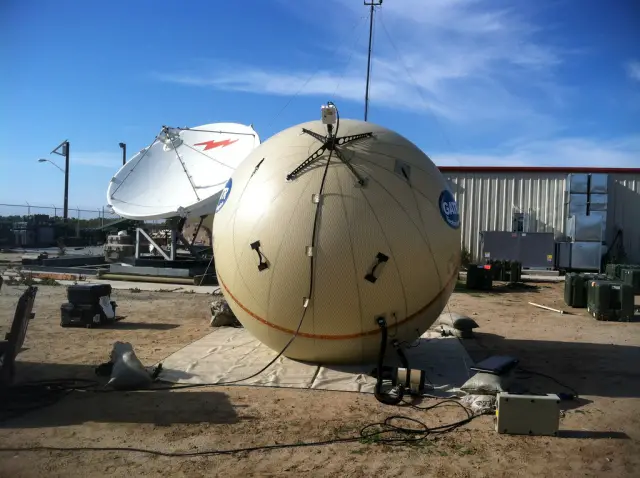U.S. army equipment GATR Ground to Air Transmit and Receive Inflatable Satellite Antennas 1401152
|
Military Defense Industry Technology - GATR Antenna System |
|||
|
|
|||
|
|
|||
| U.S. forces equipment GATR Ground to Air Transmit and Receive Inflatable Satellite Antennas. | |||
|
Inflatable ground satellite antennas are aiding the expeditionary nature of U.S. and coalition forces, enabling them to achieve high-bandwidth network connectivity anywhere in the world from small deployable packages. The antenna can connect Soldiers in remote locations to the Army's tactical communication WIN-T network backbone, as well as support other services and first responders. (By Amy Walker, PEO C3T)
|
|||
|
|
|||
 Ground to Air Transmit and Receive Inflatable Satellite Antennas are increasing agility and expeditionary nature of U.S. forces. Ground to Air Transmit and Receive Inflatable Satellite Antennas are increasing agility and expeditionary nature of U.S. forces. |
|||
|
|
|||
|
"Many of the conventional satellite terminals previously fielded aren't suitable for some of the more agile transportation requirements of today's deployed Joint Forces," said Lt. Col. Leonard Newman, Army product manager for Satellite Communications, which is assigned to project manager Warfighter Information Network-Tactical, known as WIN-T. "The inflatable satellite antenna is transforming how Special Operations forces and now airborne and other conventional forces deploy high-bandwidth SATCOM around the world."
Future Joint contingencies and support operations are expected to require rapid deployment of smaller sized elements to a wide variety of austere environments, with Soldiers needing to fight on arrival. The lightweight, easily transportable Ground Antenna Transmit & Receive, or GATR, inflatable antenna reduces size, weight and power requirements over current capability, enabling smaller units to quickly deploy anywhere in the world and achieve high-bandwidth connectivity. It also uses the same modems, baseband, encryption and networks as traditional terminals so they can leverage the existing network and services. The Marine Corps established contracts to procure and certify the GATR terminal for military Ka- and X-band use. As the Army evaluates its SATCOM terminal portfolio to prepare for future contingencies, it is leveraging the Marine's previous efforts to add these versatile terminals to its own portfolio. "Gaining access to the full complement of net-centric warfare applications earlier in operations is critical to establishing and maintaining effective command and control," said Jim Sawall, assistant product manager for the Commercial Satellite Terminal Program. "The inflatable antenna technology provides commanders with battalion-strength communications and data links earlier and with significantly reduced logistics burden--and in situations where previously only company-level communications would have been possible." Fitting in just two transit cases, the GATR antenna provides the same robust data links as conventional, rigid satellite dishes, but weighs up to 80 percent less. Its unique ultra-portable design can provide high-bandwidth communications for transmission of classified and unclassified data, voice and video, all in a compact, highly survivable package. The flexible ball and dish weigh only 25 pounds, making the entire system small and light enough to be transported as checked baggage on commercial aircraft, and once on-site, it can be set-up in less than 30 minutes. The system features a dynamic inflation mechanism that is easy to turn on and off and provides immediate, automatic adjustment to pressure changes caused by environmental factors. |
|||
|
|
|||
 The antennas can be packed in two cases that weigh less than 45 kg for a single-band antenna, versus eight or more cases for traditional rigid antennas, and can be set up in less than 30 minutes, according to GATR. The antennas can be packed in two cases that weigh less than 45 kg for a single-band antenna, versus eight or more cases for traditional rigid antennas, and can be set up in less than 30 minutes, according to GATR. |
|||
|
|
|||
|
The GATR antenna system also contains a battery back-up system to ensure continuity of operations for at least six hours in the event of power loss. Although satellite acquisition is manual, a brief introductory course makes it easy to point and prepares the operators to successfully deploy it anywhere.
The spherical shape greatly reduces the effect of wind, and a unique cable anchoring system assures stability in winds exceeding 40 mph, and survivability up to 60 mph--wind speeds that can interrupt connectivity in all other terminals. Moreover, it is suited to perform in the field, with all elements passing environmental testing requirements, Newman said. The GATR antenna is designed to support the same networks as traditional 2.4 meter dishes that require a trailer, vehicle and four people to lift the transit cases. The Army is also looking to introduce a larger four meter version of the inflatable antenna for data transport both within and beyond theater. By deploying a four-meter antenna in as few as three cases, Soldiers can augment, or in some cases replace, existing vehicle-size infrastructure to enable more nimble operations from the hub level down to the tactical user. Instead of requiring a cargo pallet or vehicle-sized transport container, Soldiers can move critical, large aperture communications gear to or around the battlefield in a High Mobility Multipurpose Wheeled Vehicle, light tactical vehicle, small helicopter, etc. -- greatly increasing the expeditionary nature of today's forces, Newman said. "The GATR allows you to deploy high-bandwidth communications anywhere in the smallest possible package," he said. |
|||
|
|


























